African violets are charming houseplants, and they can brighten up any garden with their purple, pink, or white flowers. However, these plants are susceptible to many diseases and pest problems, and they make an excellent breeding choice for pests and diseases.
So, in this article, we will discuss how to get rid of bugs on African violets?
To get rid of bugs on African violets, you need to follow these steps:
- Check the foliage and soil for pest infestation.
- Separate the plant from other healthy plants.
- Spray some neem oil over the plant.
- Shower the plant with lukewarm water.
- Use insecticidal soap and horticulture oil.
- If the problem persists, use chemical insecticides and pesticides.
The most common bugs that attack African violets are mealybugs, cyclamen mites, and thrips. Some bugs feed on the roots, while other feed on the foliage and flowers. A common pest infestation sign on African violets is spotted, speckled, or yellow leaves and flowers.
These pests can be avoided by following prevention measures and by taking appropriate corrective actions to cure them.
Always begin any control by checking the symptoms of infestation during the watering and grooming of violets.
This article will help you identify the different pests and the ways to protect your African violets from these bugs.

Why do your African Violets have bugs?
Pests are attracted to African violets because of their fragrance and brightly colored petals.
The fuzzy, velvety texture and creamy white leaf edges appeal to the bugs. They like feeding on these plants, and they pierce the flower tissues and suck up plant fluids.
What kind of bugs get on African violets?
African violets, like any other flowering plants, have pests and diseases.
If your violets are not doing well, they can be affected by one of the many types of insects known to affect these spices.
An African violet may attract many sap-sucking insects like Aphids, thrips, mealybugs, mites, scales, etc.
How can you get rid of bugs on African violets?
African violets undergo problems due to different pest problems. This article will discuss the pest type, symptoms, and the corrective measures against them.
The primary pests you will notice are:
Aphids
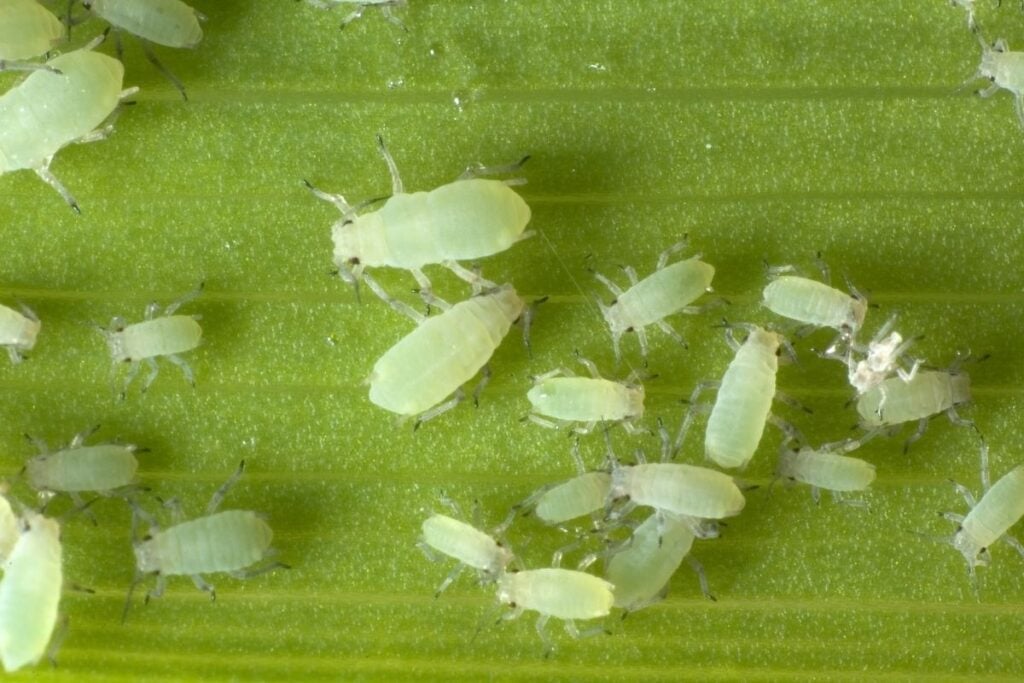
Aphids are small, soft-bodied insects that suck juices from plant sap, distorting new growth. These bugs are light green, dark green, brown, or black, hiding under small and young leaves.
They pierce leaves with their needle-like mouthparts and cause visible damage, such as creating small spots or patches in leaf surfaces and also viruses to the plants.
Signs:
- African violets develop pale, curled, wilted leaves and deformed flowers.
- These bugs produce honeydew that makes the lower stems and leaves sticky.
- Black mold can be seen on the leaves, and they feed on honeydew.
How to remove aphids?
Aphid control on African violets is relatively easy, and it’s always better to use non-chemical methods first. For that, you should take warm water and a few drops of insecticidal soap to remove them.
Handpicking is problematic since these insects are tiny, but you can wipe the insects with a cotton swab by dipping in rubbing alcohol. Alternatively, you can use different organic insecticides like pyrethrins, deltamethrin, and cyfluthrin.
Broad mite
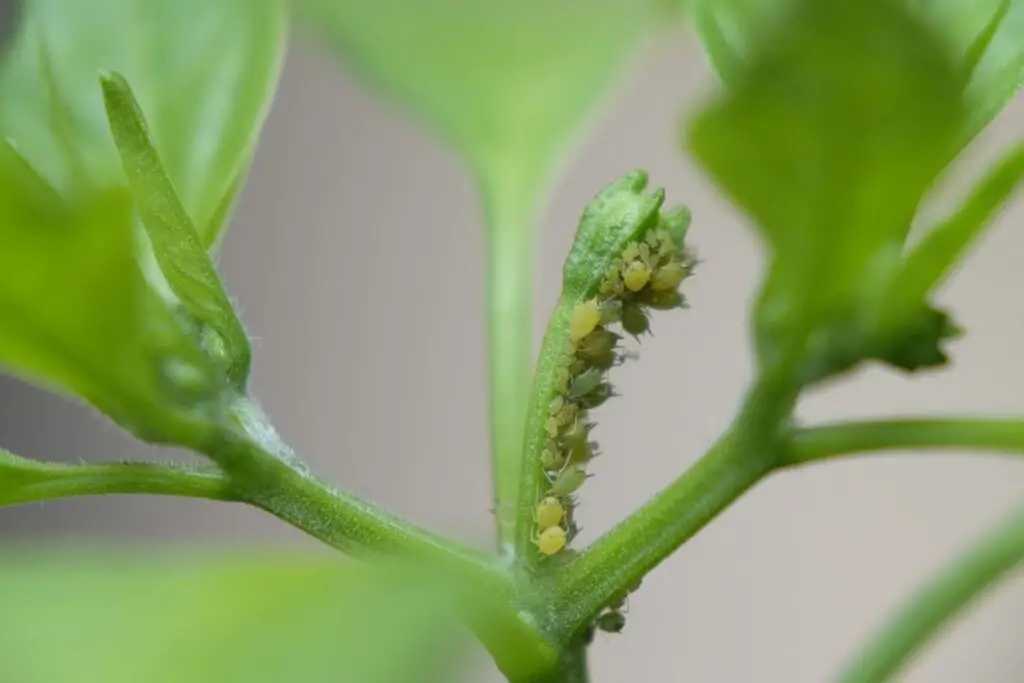
Broad mites feed on the leaves of African violets. They attack older and outer leaves of African violets.
They are not visible due to their tiny size. Young broad mites are colorless, and the adults are dark green.
Signs:
- The leaves of violets become brittle and turn yellowish, and the edges of leaves curl.
- The leaves get damaged.
How to remove broad mites?
You can control broad mites by removing the outer portion of leaves. You can use natural organic methods to treat your plant.
Try garlic sprays and insecticidal soaps. You can give hot water treatment to young plantlets. For that, you need to insert the plant in a bucket of water at 110 °F for 12-20 minutes. You must closely control the temperature.
Mites are generally hard to control with chemical treatment because their short life span makes them likely to develop resistance. For chemical treatment, use products containing abamectin and spiromesifen.
Looking for gardening supplies? We have tested 100's of products before recommending them to you guys. Check out our best pick below:
| Image | Gardening Supplies | Best Price? |
|---|---|---|
 Top
Top Top
Top | Raised Garden Bed Kit | Check On Amazon |
 | XLUX Soil Moisture Meter, Plant Water Monitor, Soil Hygrometer Sensor for Gardening, Farming, Indoor and Outdoor Plants, No Batteries Required | No Results |
 Top
Top Top
Top | 82 Pcs Garden Tools Set and Extra Succulent Tools Set | Check On Amazon |
 | Joeys Garden Expandable Garden Hose with 8 Function Hose Nozzle, Lightweight Anti-Kink Flexible Garden Hoses, Extra Strength Fabric with Double Latex Core, (50 FT, Black) | No Results |
 Top
Top Top
Top | Dual Chamber Compost Tumbler | Check On Amazon |
 Top
Top Top
Top | Sunnyglade Plant Stakes | Check On Amazon |
 Top
Top Top
Top | Organic Cold Pressed Neem Seed Oil | Check On Amazon |
 Top
Top Top
Top | Mighty Mint Gallon :-Insect and Pest Control Peppermint Oil | Check On Amazon |
 Top
Top Top
Top | Scotts DiseaseEx Lawn Fungicide | Check On Amazon |
 Top
Top Top
Top | Jacks Classic 20-20-20 All Purpose Fertilizer | Check On Amazon |
 Top
Top Top
Top | 30,000 Seeds Pollinator Attracting Wildflower Mixture | Check On Amazon |
 Top
Top Top
Top | Survival Vegetable Seeds Garden Kit-Over 16,000 Seeds | Check On Amazon |
Cyclamen mites
Cyclamen mites are tiny creatures that cause significant damage to African violets.
They mainly affect those plants that are growing in areas of high humidity. You are likely to see the damage these insects do before you see the signs of insects or eggs.
This mite also injects chemicals that harm the leaves and the plant.
Signs:
- The crown of African violets becomes brown or yellow and dehydrate.
- The flower reduces in size and fails to develop.
How to remove Cyclamen mites?
To prevent infestations of Cyclamen mites, you must space your African violets so they do not touch each other.
You can treat infested plants with miticide that should not harm natural enemies. It’s always better to avoid pesticides as they are resistant to many pesticides.
The tiny mites and eggs remain protected from spray under small folds of leaves and buds. A better solution is that you can dispose of the affected plants.
In case of minimum damage, you can remove the plants’ affected parts and immerse the plant and its pot at 110°F for 15-30 minutes.
You can also look for a couple of predatory mites in the market that target these mites.
Foliar Mealybugs
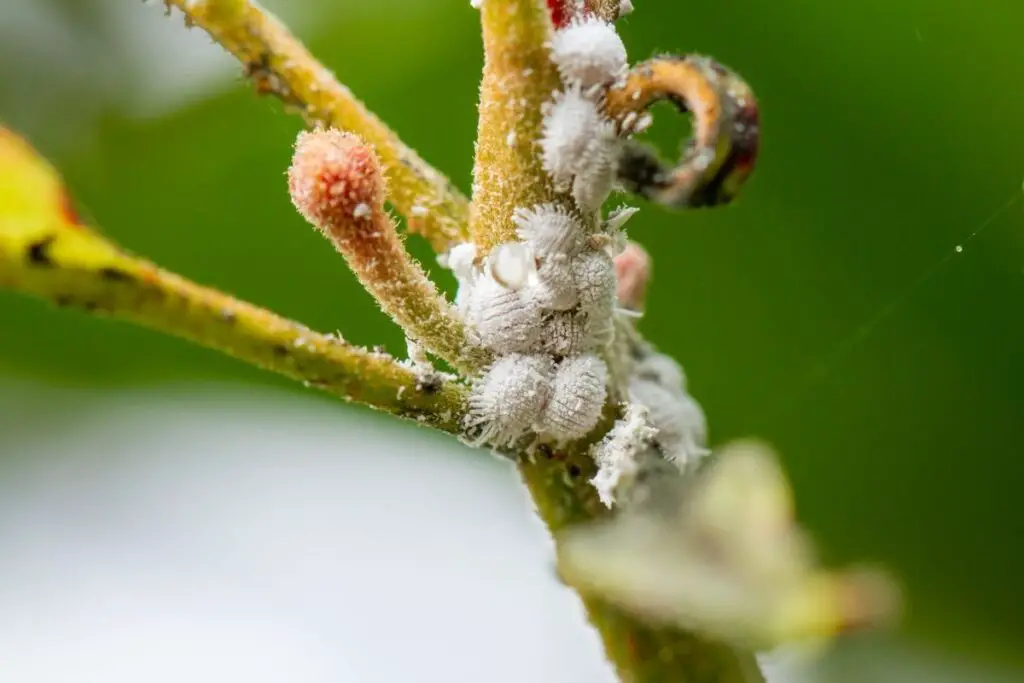
Foliar mealybugs are soft-bodied pests, and their bodies are covered with a white cotton-like coating. The most common foliar species is citrus mealybugs.
They feed on plant sap by digging through leaf surfaces with their limbs and leaving behind sticky honey-like residue substances that encourage mold growth. They expel a large amount of honeydew.
Signs:
- White cotton-like patches found in leaves of violets.
- Leaves of your African violets become yellow, plant wilts.
- Flowers and buds fall off the plant.
How to remove foliar mealybugs?
First, you must clean the plant with a cotton ball soaked in alcohol. Remove the eggs along with the cotton-like materials.
You can also take one ounce of vinegar, mix it with 3 ounces of water, and spray it on your plants. You can spray the plants with an insecticide that contains dimethoate or malathion solution.
After application, observe the plant regularly to ensure effective control of the application. You can go for biological predators such as cryptolaemus that feeds on mealybugs.
Soil Mealybugs
Another common mealybug is Pritchard soil Mealybug. You might come across this near your African violets, and it isn’t easy to diagnose them as they feed on the roots hidden under the soil.
They are smaller than foliar mealybugs and release a powdery white substance.
Signs:
- These pests damage the roots of African violets due to which they can’t absorb water inspite of favorable soil conditions.
- These bugs are found around the roots as fine white threads.
- A white waxy patch of webbing can be seen inside the plant’s pot.
How to remove soil mealybugs?
First of all, you have to soak the roots of your African violets in an effective solution of insecticide.
After 7 days, wash the soil gently from the roots with warm water, and then plant your violets in a new pot and potting soil.
You can add diatomaceous earth mix to the soil to control these mealybugs.
Red spider mite
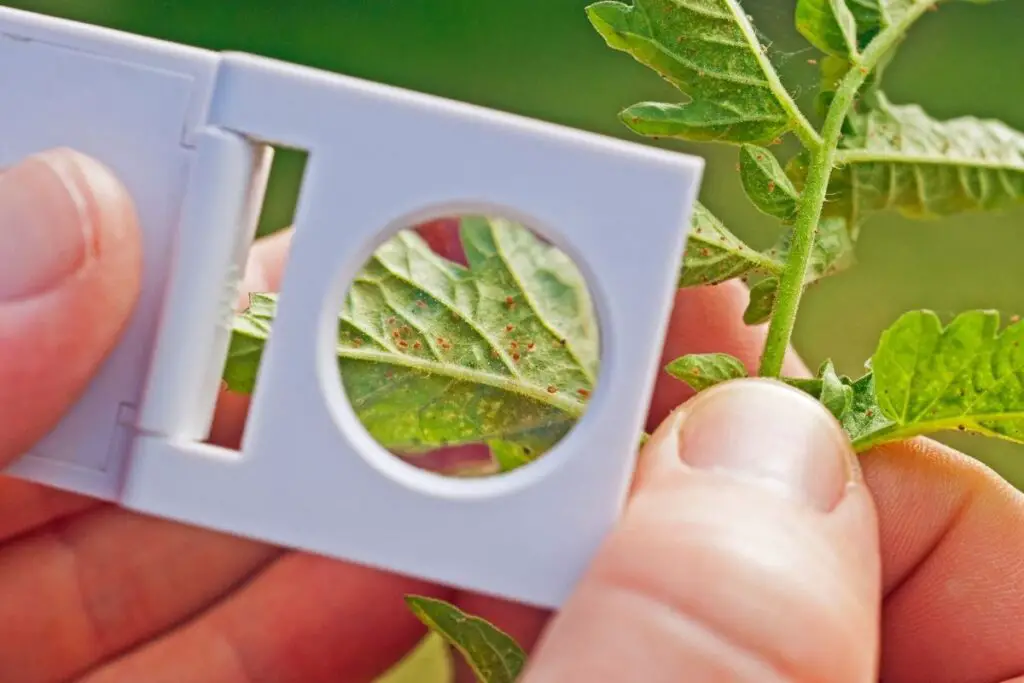
Red spider mites tend to attack dry plants, and African violets don’t fall on that list as they prefer moist environments. But sometimes they can get transferred from other houseplants or other cut flowers.
They are found inside the leaf surface and around new growth. They are red or green.
Signs:
- Yellow leaves
- Spots on leaves
- Leaves falling off
- Web-like structures under leaves and stems
How to remove red spider mites?
Maintain the required humidity level and temperature that the African violets prefer. You can use chemical sprays that contain pirimiphos-methyl or pyrethrins.
You can apply the traditional chemical treatment by spraying Neem solution to your plant. You can introduce phytoseiulus persimilis, another mite that attacks red spider mites.
Scales
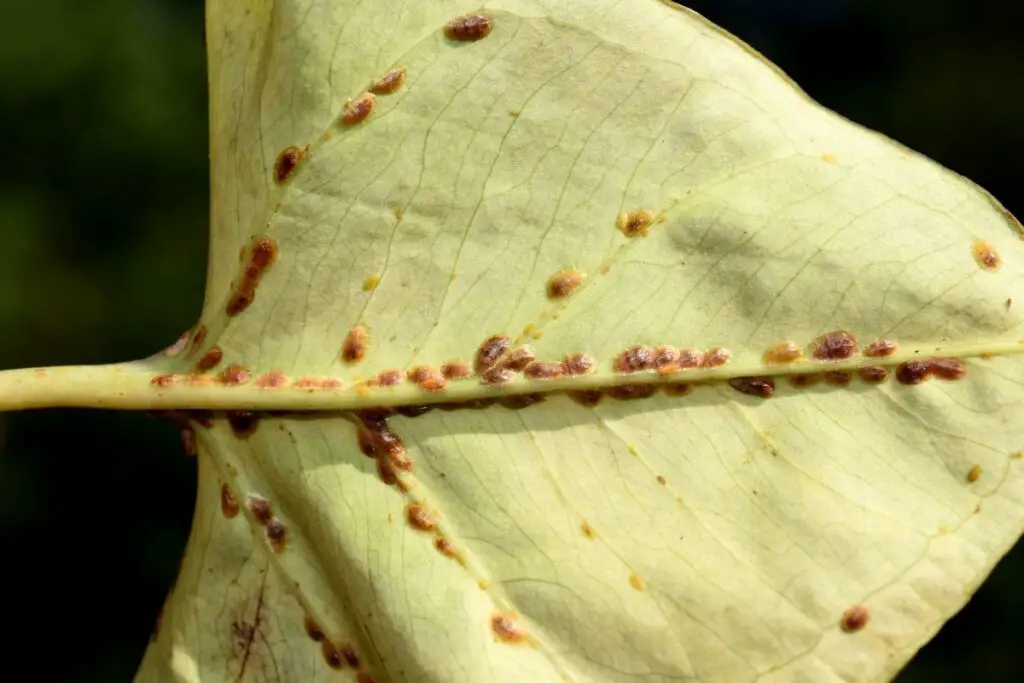
Scale is a common pest found in many plants, including African violets. They are primarily brown, round, and don’t come with wings, and they leave behind the sticky honeydew on the plants.
They suck sap from plants and take out their essential nutrients. These bugs feed and breed on the plants and grow in number in no time.
Signs:
- You will notice a stcky substance on the soil surface and lower leaves.
- You will notice tiny bleached spots on the leaves
- You will notice hallow areas under the leaf surface.
How to remove scales?
You can remove the scales with a cotton ball. Dip the cotton in alcohol. A frequent and careful examination is necessary.
You can spray chemical insecticides that contain dimethoate and malathion. Spray your plants continuously for 7 days. There are some home-based remedies such as neem oil.
Another option you can use bleach-free dishwashing liquid by adding 7 ml per liter of water and applying it to your African violets.
Fungus gnats
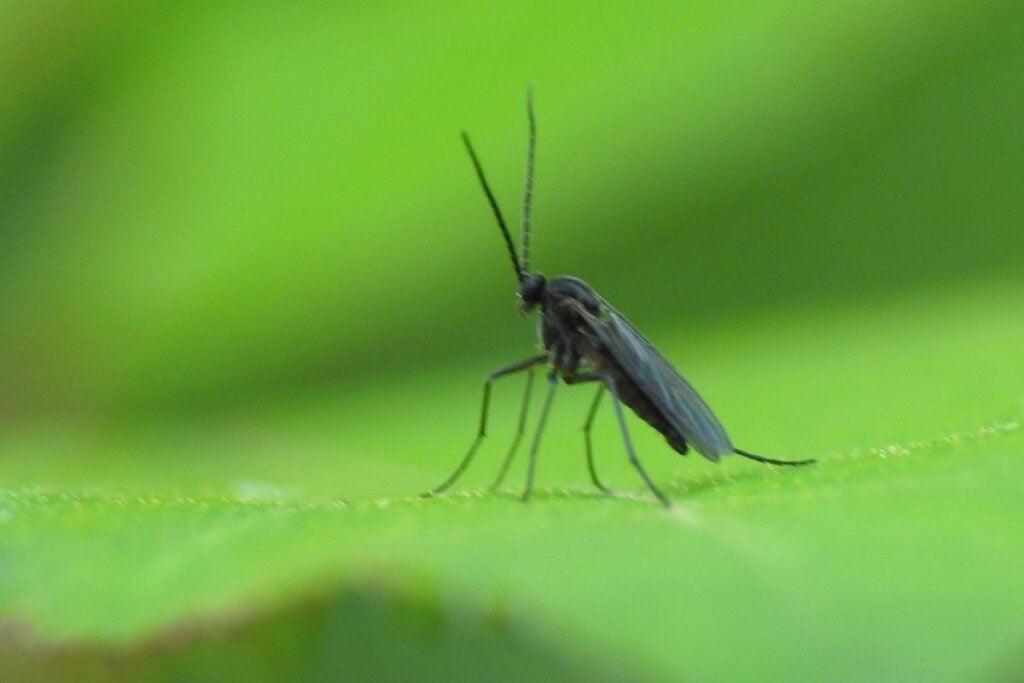
They are common indoor plants bugs. They attack African violets when humidity and moisture both are high.
These non-biting adults create a flying nuisance around the plant. They breed in moist soil that has a rich amount of organic matter. They don’t damage plants but feed on tender plant roots and consume organic matter from the soil.
Signs:
You will notice black flies around your African violets.
How to remove scales?
First of all, inspect the plants thoroughly. Remove the soil from the base of the plant and look for larvae. They do best in damp soil, so never overwater your plants, especially in winters.
Allow the soil to dry to a depth of 1-2 inches between your waterings. This will kill the larvae and prevent the development of eggs.
You can use yellow sticky traps at the soil surface to capture large numbers of egg-laying adults. You can use pesticides such as bifenthrin that kill larvae.
You can apply insect killer sprays, a combination of cinnamon or sesame oil, and non-toxic fungus gnats.
Thrips
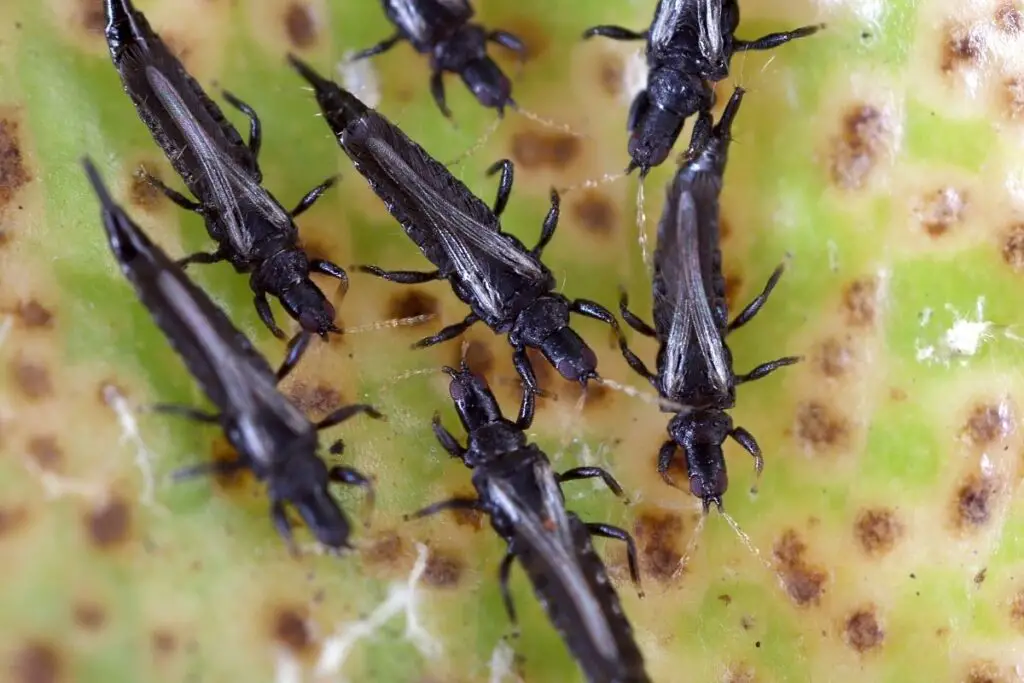
Thrips are common on African violets. They are small straw-colored insects with two pairs of feathery wings.
They damage the plants by sucking sap and making the plants weak.
Signs:
- Since thrips might eat the pollen, you will find them on the leaves and flowers of your African violets. You must take a look at the flowers by moving them and look for tiny insects.
- The leaves may turn pale, splotchy, and silvery.
- The leaves get curled, and leaves get deformed in case of heavy infestations.
How to remove thrips?
The control starts by removing pot debris. Then carefully check your plants. Remove the infected parts by securely bagging and putting them in the trash.
Blue sticky traps are often helpful to monitor adult populations. You can use biological insecticides like BotaintensES and short-lived botanical insecticide (pyrethrins).
Weekly application of insecticides is essential. Reduce the intensity of light for the plants. You can use insecticidal soap from naturally occurring plants oils.
Natural remedies such as spin sod and neem oil are helpful.
Vine weevil
Vine weevil feed on indoor African violets. They are long, flat, curled insects with blackheads and eat leaves during spring and summer.
Their grubs cause most of the damage when they feed on plant roots, resulting in wilting and plant death.
Signs:
- The plant will collapse and will not have any roots.
- The soil or compost will contain the larvae of the vine weevil.
How to remove vine weevil?
Firstly you have to discard the compost or soil safely. Then you must re-root the crown after washing the injured stem with warm water.
Check the roots to figure if there’s any damage. You can buy pathogenic nematodes and add them to the water while watering the African violets.
Whiteflies
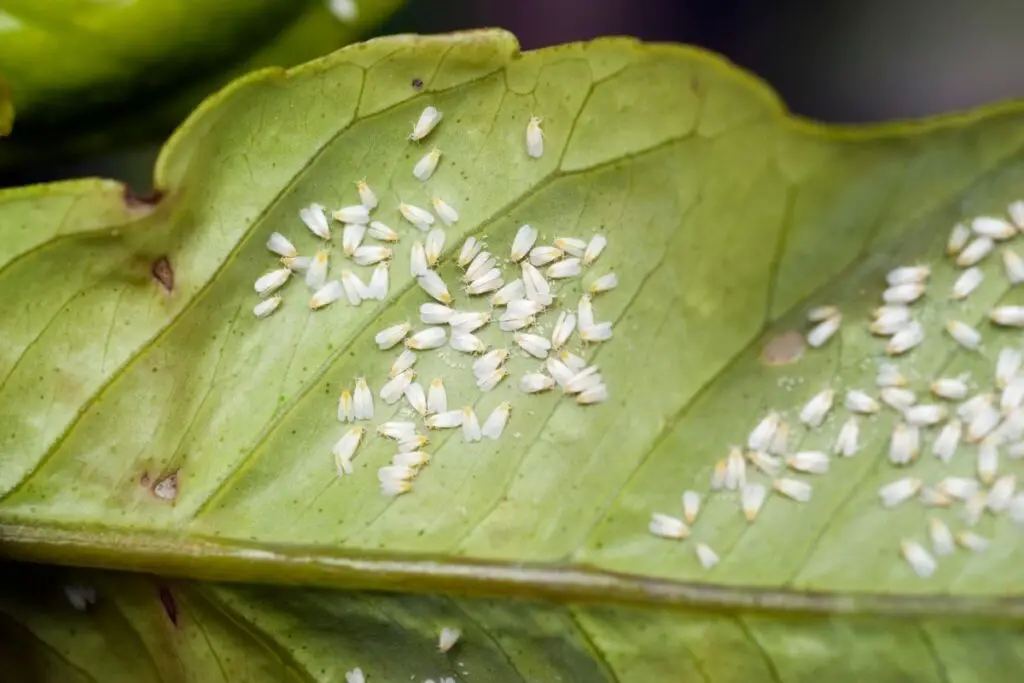
Very few whiteflies are attracted to African violets. The problem with whiteflies is that they spread fast.
Whiteflies are tiny white-winged insects found on the underside of leaves. They feed on the sap of the leaves and secrete honeydew.
Signs:
- Honeydew
- Sooty mold
- Yellow and mottled leaves
How to remove whiteflies?
You can control whitefly with an insecticide perimorphs-methyl, and continue the treatment every 4-5 days.
Hang sticky traps among plants. Organic neem oil and horticultural oil work effectively on these pests.
How to prevent the common African violets bugs?
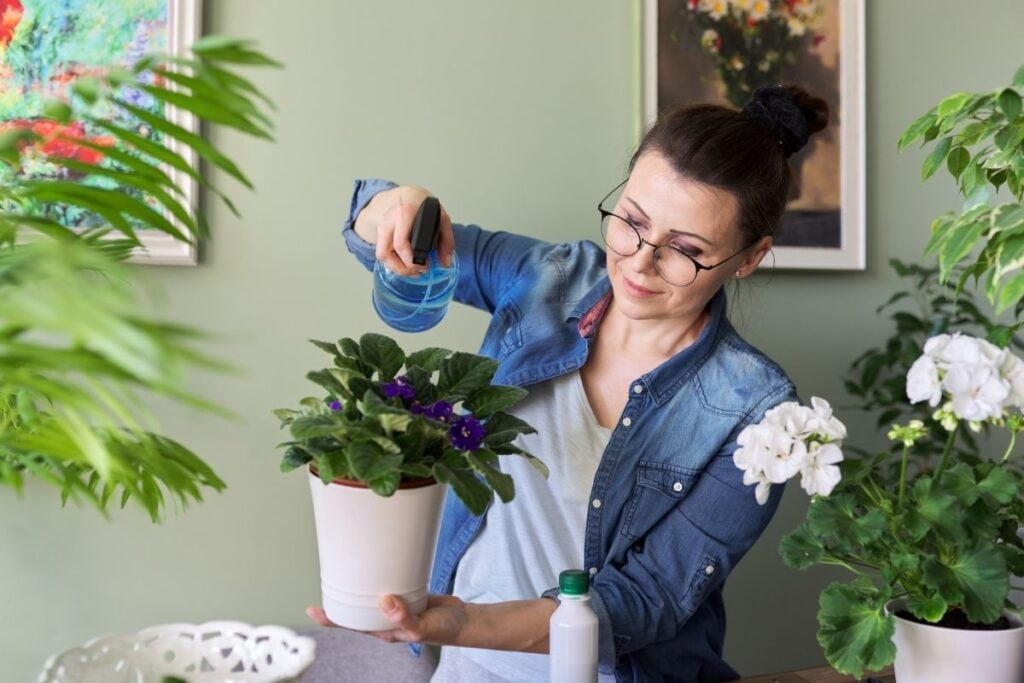
Prevention and care are the best ways to avoid pests and their effects on your plants. Let us now consider some tips to keep the pest away from your beloved plants.
1. Look before you buy.
When picking out a new African violet plant, check the top and bottom of leaves, stems, and flowers for evidence of any bugs. Healthy plants will never get attacked by bugs easily.
After buying the plants, sprinkle some systematic soil granules as prevention measures against mealybugs, fungus gnats, aphids, etc.
2. Separate your new African violets.
You should inspect your plants carefully and then separate them for a week. There’s always a possibility that you missed a pest, and there can be pests in soil too.
So, keep the new plants away from other plants and inspect them daily. Once you know there are no bugs, introduce your plant to other plants.
3. Use fresh soil.
Bugs thrive in the soil even without plants present. Never use old potting soil from other plants. Use clean potting soil to prevent bugs.
4. Keep your African Violets healthy.
Healthy plants have a robust immune system. Provide a proper amount of sunlight, water, and fertilizer to keep your African Violets healthy. You can also spray a neem-oil solution once a month to prevent pests.
Source: Wikipedia, African violet: Classical breeding, African Violet Society of America, In vitro propagation of African violet, University of Florida, North Dakota State University, The University of Georgia.
